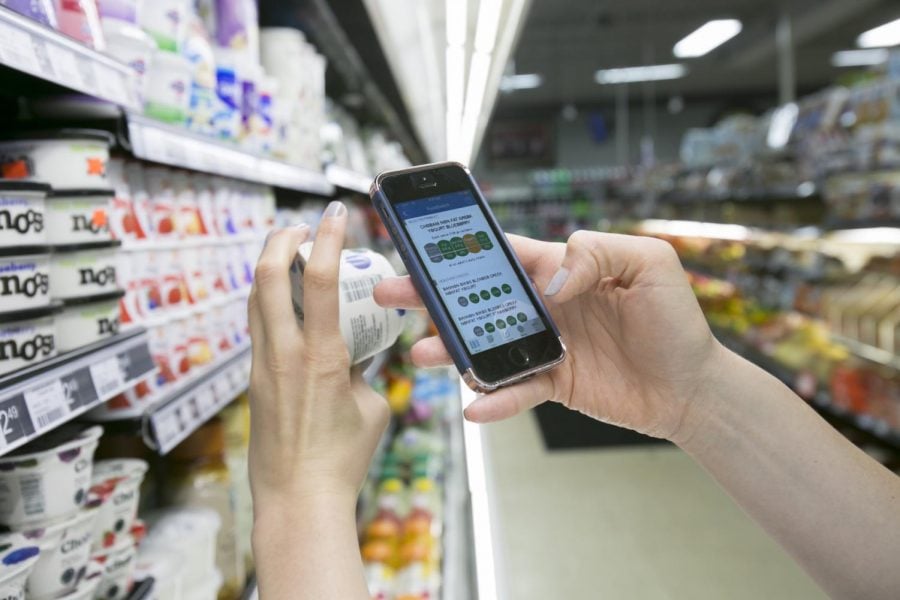Northwestern Medicine helps release nutrition app in the U.S.
Source: Northwestern University
After users take a picture of a food nutrition label, FoodSwitch’s Traffic Light Labelling Mode allows consumers to compare the food’s contents to daily recommended amounts of calories, fat, sodium and other ingredients.
July 8, 2018
When Feinberg Prof. and Northwestern Medicine cardiologist Mark Huffman goes to the grocery store, he now buys a new, healthier brand of bread than he used to – a brand he’d never heard of until the app FoodSwitch.
Officially launched in the US through Apple and Google Play on June 28 with the help of Huffman, FoodSwitch uses a database of 268,000 food products to guide consumers towards healthier options.
When a user takes a picture of a package’s barcode, the app pulls up nutritional information and a Health Star rating. The app also features different modes, such as the Traffic Light Labelling mode, which gives green, yellow or red lights to the amounts of fat, sodium and sugars in the scanned product, and the Compare feature ranks similar products from most to least healthy.
Gus Hancock learned about FoodSwitch from his daughter, a neighbor of Huffman’s. After having open heart surgery in late May, the app will help Hancock make better decisions for his new, strict diet when making purchases in the future, he said.
“It’s a lot easier than reading the info on the can,” Hancock said. “You see the enormous differences in sodium and other things. The utility in it is just wonderful.”
FoodSwitch was originally released in Australia in 2012 by The George Institute for Global Health. It is now available in seven additional countries including China, the United Kingdom and, now, the US.
Huffman and Northwestern Medicine partnered with The George Institute and with Label Insight, a company with an existing product database, to create the US version. One Brave Idea, a research program sponsored by the American Heart Association, Verily and AstraZeneca, also provided funding support.
One of the biggest challenges, though, is finding and listing a massive amount of products, said Abigail Baldridge, a Northwestern Medicine biostatistician. Baldridge worked with Northwestern graduate students to compile US product data. The US has more than twice the food products in the database than any other country, and not everything is listed yet, she said.
Not to mention that 20 percent of products on the shelves are replaced by new ones every year. To fill in missing products, the app’s “Help Us Out” function encourages users to send in photos of unlisted items.
“People are contributing to this surveillance of the packaged food supply that hasn’t been possible before,” Huffman said. “Not only of the US’s packaged food supply but of the world’s.”
That surveillance is one of FoodSwitch’s powers, app co-creator Elizabeth Dunford told The Daily in an email.
An original goal of was to help consumers select healthier brands, but now the app can create push for higher quality food in general, she said.
“We know from anecdotal feedback from food companies that they are using FoodSwitch to drive internal food reformulation and innovation,” Dunford said. “If a company reformulated a product to be healthier, then every consumer who buys it reaps the rewards.”
Email: rachelkupfer2021@u.northwestern.edu
Twitter: @rachkupfer



